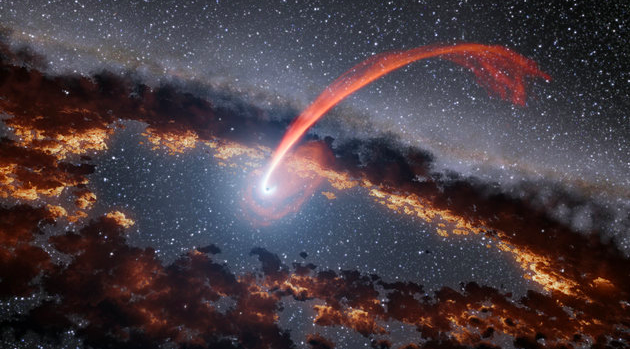LOOK: NASA spacecraft captures Black Hole eating stars
A spaceship belonging to the National Aeronautics and Space Administration (NASA) has managed to capture a real life “cosmic belch” showing a black hole devouring a nearby star and “burping” out its remains.
The stunning image was captured through NASA’s Wide-field Infrared Survey Explorer (WISE) telescope, according to The Huffington Post.
For the first time ever, astronomers managed to document the phenomena of black holes consuming nearby stars, known as “stellar tidal disruption.”
After the stars have been gobbled up, the aftermath sees a release of a huge burst of energy that includes ultraviolet and X-ray light in the form of high-energy radiation flares.
When an object is absorbed by a black hole, not all of the contents are consumed—instead it emits a vast “belch” of intense radiation, the report said.
Black holes can completely destroy space dust, but when it is far enough out, some dusts can survive and be measured by boffins on the ground. The trail of dust can extend for trillions of miles, NASA confirmed.
By analzying the data from WISE, a team of astronomers were able to measure the radiation the “hot dust” gave off. The dust, which is invisible to the naked eye, forms a shell that extends a few trillion miles from the black hole, or about half a light year away.
“The Black Hole has destroyed everything between itself and this dust shell,” Sjoert van Velzen, postdoctoral fellow at Johns Hopkins University, said in a NASA news release. “It’s as though the black hole has cleaned its room by throwing flames.”
Citing Van Velzen’s 2009 findings through WISE, three active black holes surrounded by the radiation-charged cosmic dust were discovered, while a separate Chinese group has found another one.
“This is the first time we have clearly seen the infrared light echoes from multiple tidal disruption events,” Van Velzen said. Khristian Ibarrola
